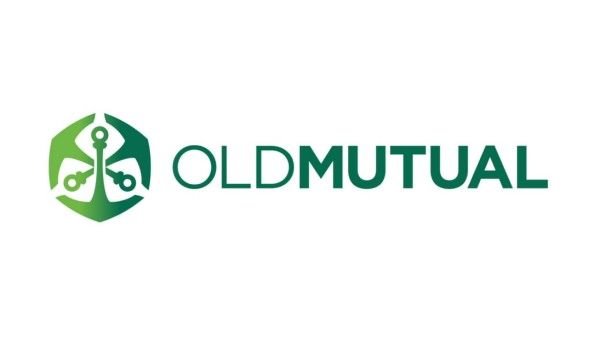Social insurance is an important aspect of any country’s social welfare system, and South Africa is no exception. Social insurance programs in South Africa include old age contributory pensions, social security and health insurance benefits, occupational injury benefits, paid sick leave, maternity benefits, and other social insurance. These programs aim to support individuals and families in need financially and ensure everyone can access basic healthcare.
One of the major social insurance programs in South Africa is Social Security. Social Security benefits are available to individuals who have made social security contributions. These benefits include old age pensions, disability pensions, and survivor’s pensions. In addition to Social Security, South Africa has other social insurance programs such as Medicare, Unemployment Insurance, Workers’ Compensation, and Disability Insurance. These programs provide financial support to individuals who cannot work due to illness or disability or who have lost their jobs due to economic reasons.
Social insurance plays a crucial role in South Africa’s social welfare system. It provides a safety net for individuals and families who need financial support and ensures everyone has access to basic healthcare. As such, it is an important aspect of South Africa’s efforts to reduce poverty and inequality and to promote social justice and human dignity.

Understanding Social Insurance
Social insurance is a government-run security system that benefits its citizens who face financial hardship due to various reasons such as unemployment, disability, or old age. In South Africa, social insurance is a part of the social security system that aims to provide financial assistance to those in need.
The social insurance system in South Africa comprises various programs, including Social Security, Medicare, Unemployment Insurance, Workers’ Compensation, and Disability Insurance. These programs are designed to provide financial assistance to individuals unable to work for various reasons.
Social insurance is funded through a combination of employee and employer contributions and government funding. The contributions made by employees and employers are usually based on a percentage of the employee’s salary, while government funding is provided through taxes.
One of the key benefits of social insurance is that it provides a safety net for individuals unable to work due to various reasons such as illness, injury, or old age. Social insurance programs in South Africa provide financial assistance to individuals who cannot work due to these reasons, ensuring that they can maintain a basic standard of living.
Social Security System in South Africa
South Africa has a social security system that provides social protection to its citizens. The system includes contributory forms of social insurance and needs-based assistance from public funds, commonly known as social assistance. The Department of Social Development manages the social security system.
One of the primary social security programs in South Africa is the Social Security System. It provides social protection to individuals who have contributed to the system. The Social Security System includes benefits such as old age pensions, disability, and child support grants. The system is funded through social security contributions made by employees and employers.
The Social Security System is administered by the South African Social Security Agency (SASSA). SASSA is a public entity that falls under the jurisdiction of the Department of Social Development. It is responsible for administering and paying social security benefits to eligible beneficiaries.
In addition to the Social Security System, the public service provides social protection to its employees through various benefits such as medical aid, pension funds, and disability benefits. These benefits are funded by the government and are provided to public servants as part of their employment package.
Social Grants and Welfare
South Africa has a comprehensive social security system includes social grants and welfare programs. These programs aim to provide a safety net for the poor and vulnerable, ensuring access to basic services and support.
The South African Social Security Agency (SASSA) is responsible for administering social grants in the country. SASSA grants are means-tested and are available to South African citizens who meet certain eligibility criteria. The agency provides various types of grants, including:
- Child support grant
- Disability grant
- Foster child grant
- Care dependency grant
- Grant-in-aid
The child support grant is the largest and most widely used social grant in South Africa. It is aimed at helping families with children under the age of 18 who need financial assistance. The budget provides a monthly payment to eligible families, which can be used to cover basic needs such as food, clothing, and education.
The disability grant is another important social grant that provides financial assistance to people with disabilities. The grant is means-tested and available to South African citizens with a permanent disability that prevents them from working and earning a living.
In addition to social grants, South Africa has a range of welfare programs that support the poor and vulnerable. These programs include:
- Social relief of distress (SRD) grants
- Unemployment insurance
- Housing subsidies
- Medical provisions
The SRD grant is a temporary measure to provide short-term relief to people experiencing a crisis or emergency. The grant is means-tested and available to South African citizens in dire need of financial assistance.
Social grants and welfare programs play a vital role in South Africa’s social security system. They provide a safety net for the poor and vulnerable, ensuring access to basic services and support.
Financing and Expenditure of Social Insurance
Social insurance in South Africa is funded through various means, including contributions from workers and employers, levies on employers, and state funding. The Unemployment Insurance Fund (UIF) is funded by contributions of 1% of pay by workers and another 1% by employers. The Compensation for Occupational Injuries and Diseases Act (COIDA) is funded by levies on employers, determined by the risk profile of the sector in which they work. The state finances the Road Accident Fund (RAF) through a levy on fuel sold.
In terms of expenditure, the UIF has seen an increase in recipients per annum, with 731 recipients in 2012/13. Revenue has also increased, with R14 billion generated in 2012/13. The Compensation Fund has seen a decrease in new claims, with 201 claims in 2012/13. Expenditure has also decreased, with R6.1 billion spent in 2012/13.
Most of the South African government’s expenditure goes towards social spending, with an estimated 96.6% or R684 billion over the medium term going towards the payment of social grants, social security, and other social benefits. At 7.6% of GDP in 2018, the social security system is far from comprehensive, with most (53.9%) of the formal expenditure attributable to the public health system (4.1% of GDP). The remainder involves social assistance (2.9% of GDP) and social insurance (0.6% of GDP).
In 2024/25, main budget non-interest expenditure is projected to grow slightly above CPI inflation. The consolidated budget deficit is projected to narrow from 6% of GDP in 2022/23 to 4.2% of GDP in 2024/25. Gross loan debt will stabilize 75.1% of GDP in 2024/25.
Challenges and Critiques of Social Insurance in South Africa
Social insurance in South Africa has faced several challenges and critiques since its inception. Despite being a crucial component of the country’s social security system, it has been criticized for its inability to address the issue of inequality and exclusion. Below are some of the challenges and critiques of social insurance in South Africa.
Inequality
One of the primary critiques of social insurance in South Africa is that it perpetuates inequality. The system is designed to provide social protection to those who can afford to pay for it, leaving out the poor and vulnerable. As a result, the system has been criticized for being regressive and failing to address the needs of those most in need of social protection.
Exclusion
Another challenge facing social insurance in South Africa is exclusion. The system is based on a contributory model, which means that only those who can afford to pay for it are eligible for social protection. This has resulted in the exclusion of many vulnerable groups, including the unemployed, informal workers, and those who cannot afford to pay for social insurance.
Backlog
The backlog in processing social insurance claims is another challenge facing the system. The long waiting periods for claims to be processed have resulted in many people being left without social protection. This has been a significant concern, especially in the COVID-19 pandemic, where many people have lost their jobs and need social security.
Post-Apartheid
The legacy of apartheid has also had an impact on social insurance in South Africa. The system was designed to cater to the needs of a small minority of the population, leaving out the majority of the people. As a result, the system has been criticized for being inadequate and failing to address the needs of most of the population.
Prices and Inflation
Finally, prices and inflation have also been a challenge for social insurance in South Africa. Social insurance has increased significantly, making it unaffordable for many people. This has resulted in many people being left without social protection, further exacerbating the issue of inequality and exclusion.
Conclusion
In conclusion, South Africa’s social insurance system is an essential safety net for many citizens. The system includes various programs such as social security, unemployment insurance, workers’ compensation, and disability insurance. The country has made significant progress in broadening social assistance and expanding health care and social insurance since 1994. However, there is still more to be done if the social security system is to meet its Constitutional requirements fully.
The South African social security system consists of the Unemployment Insurance Fund (UIF), Compensation for Occupational Injuries and Diseases (COIDA), and the Road Accident Fund (RAF). UIF and COIDA are occupational insurance and safety nets for those beneficiaries currently in the formal labour market. The Grootboom case in 2000, which was brought before the Constitutional Court, established that the state must provide social assistance to those in need, and the means-tested system was introduced to meet this requirement.
Despite the progress made, there are still challenges facing the social insurance system in South Africa. One of the main challenges is the high unemployment rate, which contributes to a lack of contributors to the system. This results in a shortfall in funds required to provide adequate social assistance to those in need. Another challenge is the need to address the traditional and informal systems of social security, which are prevalent in many communities.
The South African social insurance system is an essential safety net for many of its citizens, and the country has made significant progress in expanding social assistance and insurance since 1994. However, there are still challenges to overcome, including the need to address the high unemployment rate and traditional and informal systems of social security. The government must continue to work towards ensuring that the social insurance system meets its Constitutional requirements and provides adequate assistance to those in need.



